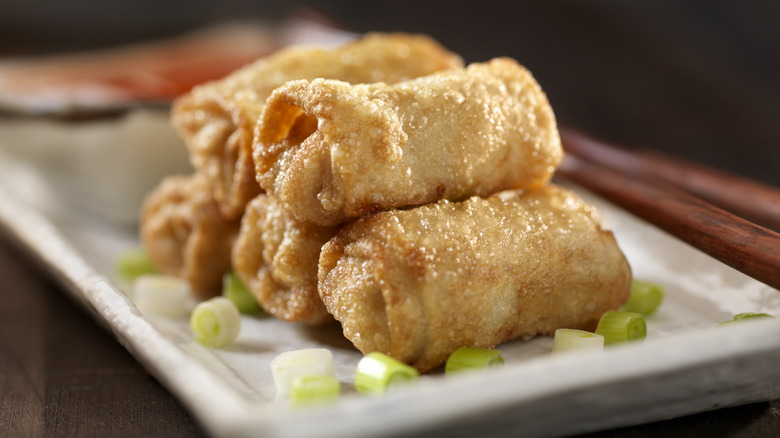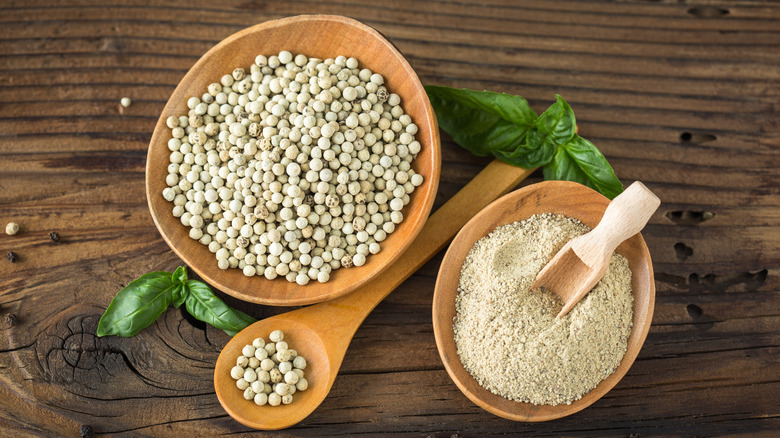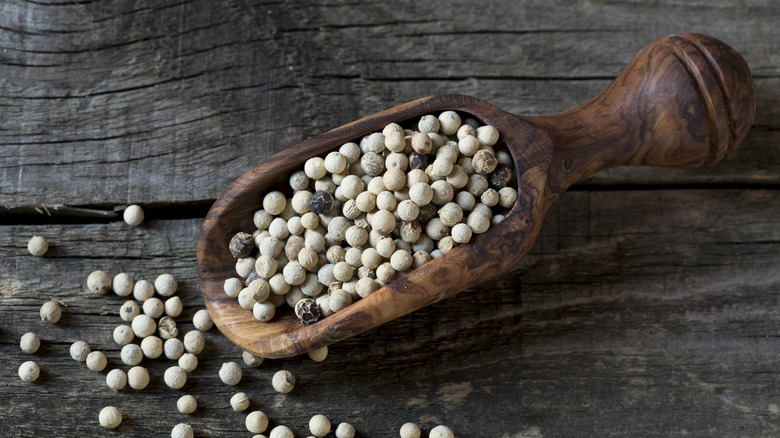White Pepper Is Your Secret Ingredient For Restaurant-Worthy Egg Rolls
First, let's clarify something about pepper: Peppercorns are fruits picked before they ripen. In fact, they are stone fruits (technically called drupes), similar to peaches. Another thing you might not know is that white pepper and black pepper originate from the same berry. The black part is the fruit's skin, and underneath it lies the white seed. So, white pepper, which might sound fancy, is just regular pepper without its wrinkled black coating. Having said that, white pepper can absolutely be a culinary secret weapon when used in many European and Asian dishes. If you're making egg rolls at home and can't understand why your simple pork, cabbage, and carrot stuffing doesn't taste like what you've eaten at a restaurant, it's almost certainly because you're not adding a pinch of ground white pepper.
Why? Because white pepper, when used judiciously, enhances the flavors around it. Generally considered milder than black pepper (some say with notes of must, grass, and even ginger), white pepper is often used in more delicate applications, like French cream sauces and herbed yogurt cheese. But it's truly indispensable in Asian cooking, from China to Thailand.
White foreign pepper powder
Chinese cuisine almost exclusively uses white pepper instead of black. In China, it's known as bai hu jiao fen, which roughly translates to "white foreign pepper powder." It's central to the particular flavor of hot and sour soup, is part of a host of ingredients in the pork-and-shrimp marinade for shumai dumplings, and provides that je ne sais quoi to the simple yet wonderfully complex egg drop soup. You better believe white pepper deserves a seat at your egg roll table.
White pepper is similarly prized in both Thai and Vietnamese cooking. In Thailand it's called prik thai, and is used more often than black pepper. In fact, along with cilantro root and garlic, it's integral to raak pakchi kratiem prik thai (often called "the three best friends"), a seasoning paste used in numerous marinades, stews, curries, and soups. Particularly in Southeast Asia, white peppercorns are created by soaking the berries in water, which not only removes the fruit, but also ferments the pepper, adding an extra dimension of flavor.
Use white pepper in a variety of cuisines
If you're considering purchasing white pepper for home cooking, you might find it pricier than its black counterpart due to the more involved processing it requires. However, you won't need to use much — nor will you be adding it to every dish. Buying whole white peppercorns and grinding just the small amount you need before use ensures you get the most aromatic and flavorful version of this secret ingredient. Moreover, ground white pepper can become stale and bitter quicker than whole peppercorns if left unused for too long.
And when should you use this secret weapon? Not only in the previously mentioned Chinese, Vietnamese, and Thai dishes. In France, where it's known as poivre blanc, white pepper is valued as much for its color as its flavor. Why compromise the appearance of a creamy sauce or mashed potatoes with black specks when white pepper can blend in seamlessly? White pepper, along with spices like nutmeg, ginger, and clove, is also a key component of the spice mix known as quatre épices ("four spices"), traditionally used in sausages and terrines. So, invest in a jar of white peppercorns and explore their versatile uses. Now, it's time to discover what egg roll wrappers are actually made of ...


